Pinto Racing With The DC Region
Page Two of Two
How Much Power do These Cars Have? How Fast do They Go?
Because of limited allowable engine modifications, most racers report about 160 HP @ 7,000 RPM. The 2,300 CC five-main bearing engine, that can be either Pinto or Mustang II, can push the 2,380 pound (minimum weight with driver) car down the main straight at Summit Point at about 130 MPH. The power to weight ratio works out to about 15 pounds per horsepower, which won't pull 10 gs. under acceleration but surely doesn't put it in the slug category. There's more to driving excitement than power to weight ratios.
Unique, maybe anywhere in the world of racing, Bruce (son) and Bob (father) Shelton jointly own the track record for GTP at Summit Point. Bob drove the 1:27.640 lap September 4, 1994, and Bruce equaled his father with an identical 1:27.640 September 3, 2000. Pretty amazing...
The GTP lap record is a little faster than HP, ITA, ITB, and quite a few other classes. There are about 35 registered Pinto owners, and a hard-core group of about 12 or so who try to make all 9 MARRS races. Fifteen or so cars at a race are not that unusual and for 2001, twenty-four cars made at least one race.
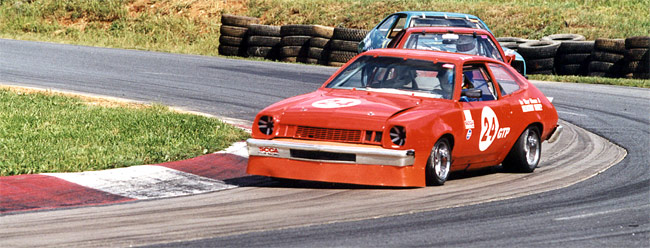
What's the Maintenance Like? Do You Have to Fool with the Car A Lot?
When buying a racecar there are many considerations; however, two that most think important are how much ongoing maintenance and parts replacement is involved and how much do parts cost. How often does the engine have to be rebuilt and at what expense? How much to replace the brake rotors and how often? And, so on. Obviously an engine that is modified to put out the maximum horsepower, that is revved to 8,500 RPMs, is more stressed (all things being equal) than one with modest horsepower that uses a maximum of 7,000 RPMs; a Ford Mustang's pistons are going to be considerably less that those of a Porsche.
The Pintos racers seem to have the best of both considerations; the engine is not highly stressed, the parts are cheap, and the routine maintenance is minimal. Brake rotors will normally last at least six races and brake pads (most use Hawk) should last about eight. As far as maintenance goes, other than brakes, rotors and tires (which should last for at least three weekends), it's just a general going over before each race, adjusting values, checking timing and such, and changing the
oil. The minimum engine maintenance is a valve job after one season and a
complete rebuild after two seasons. I've heard some Pinto racers do basically nothing to the engines and ascribe to the drive 'em till they blow philosophy, which could be easily upwards of 25 races.
Parts on any car, race or otherwise, can be replaced routinely, estimating when they are going to fail and trying to replace prior to that time...or, replaced after failure with the obvious potential for the consequences. To be competitive and run at the front of the pack, regardless of the class, the engine has to be kept pretty fresh and finely tuned; the Pinto class no exception. As in all classes, how hard you run the car, how much practice, and so on, help determine the longevity of the engine, transmission, brakes, and such. The folks who race the Pintos praise their reliability, sturdiness, and ease of maintenance.
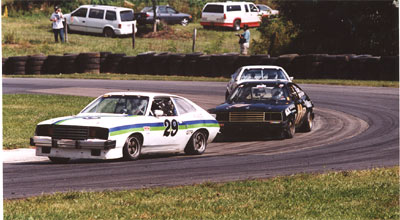
What's it Like to Drive a Pinto?
At first glance a racing Pinto is reminiscent of the old stock cars. You remember, they looked like real cars that you and I could go to our dealer and buy. Of course, there were many changes made...but you could still identify easily what brand and model the car was, back when they still had bumpers and grills and such. To a greater than lesser extent this could describe the Pintos. From the outside they look like the stock cars of the sixties and seventies; pretty much a regular Pinto except for the pinned doors, window net, reinforced windshields and rear windows, and no headlights. Inside, you'll find a stripped interior and a sturdy roll cage, a single seat, and in most cars the bare minimum of instruments and gauges. The interior of the car is no-nonsense and business like; nothing there that doesn't have a purpose or function.
According to Bruce Shelton, the racing Pinto has to be driven if not conquered; the car has to know who's boss and who's in control. The rules allow for front and rear sway bars, and by juggling widths, Shelton said, you can pretty much end up with oversteer or understeer, though most Pintos would lean toward understeer. Shelton continued, that whichever way the car is setup, the driver has to drive it...and, not let the car control the driver. Shelton said that most Pinto drivers feel that if you can drive a Pinto, you can drive anything.

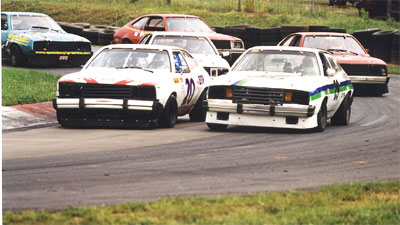 |
 |
Who Won the GTP Championship for 2001?
The GTP is a highly contested class with several cars and drivers who are capable of running at the front. For 2001 Bruce Shelton came out on top with 1,950 points, followed pretty closely by Jim Harrison who accumulated 1,840 points. Brian Sullivan battled to third place with 1,680 and was followed by Bruce Shelton's dad Bob, who had 1,450 points.
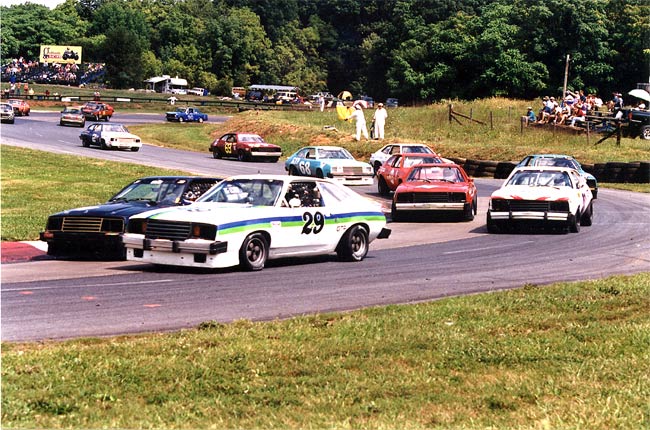
Pace lap. Getting ready to do battle. Pulse rate up a little. Eyes flicking to gauges. A quick last-minute tug to cinch up the belt and harness. Glance at the mirrors. A look at the tach.
Pinto Racers Feed the SCCA Workers
The Pinto drivers are proud that they were the first race group to feed the workers. A few years ago they began annually to feed the workers either lunch or dinner at one of the events. Since then, other race groups have joined in to show the drivers' appreciation of all the workers.
Interested in Trying Out a Pinto? Need a Reliable Car for Drivers' School? Like More Information?
 Interested in racing a Pinto? Want to mix it up with the Pinto guys? Test your mettle on the track? Want to have bragging rights with your neighbors? Weekend rentals for a race are $900 and include everything except gas; just show up and drive. Rental for a drivers' school is about $1,000 plus gas. To find out more about Pinto racing or rentals, write Bruce Shelton.
Interested in racing a Pinto? Want to mix it up with the Pinto guys? Test your mettle on the track? Want to have bragging rights with your neighbors? Weekend rentals for a race are $900 and include everything except gas; just show up and drive. Rental for a drivers' school is about $1,000 plus gas. To find out more about Pinto racing or rentals, write Bruce Shelton.
Thanks to....
Would like to thank Bruce Shelton and his fiancée Debbi Yeager, Scott Marino, and all the Pinto folks who gave of their time in providing information about their cars and what it's like to race them.
Note: With the exception of two photos borrowed from elsewhere on this site, all the pictures on The Pinto Pages were taken during Labor Day weekend 2001.
Home page
Pintos Page One
Comments Welcomed.....







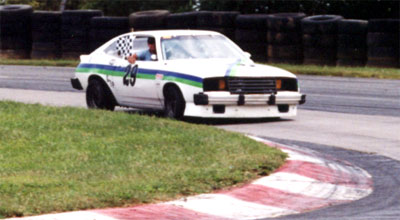
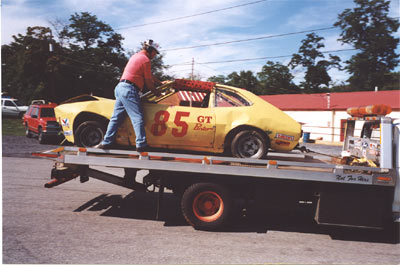


 Interested in racing a Pinto? Want to mix it up with the Pinto guys? Test your mettle on the track? Want to have bragging rights with your neighbors? Weekend rentals for a race are $900 and include everything except gas; just show up and drive. Rental for a drivers' school is about $1,000 plus gas. To find out more about Pinto racing or rentals, write Bruce Shelton.
Interested in racing a Pinto? Want to mix it up with the Pinto guys? Test your mettle on the track? Want to have bragging rights with your neighbors? Weekend rentals for a race are $900 and include everything except gas; just show up and drive. Rental for a drivers' school is about $1,000 plus gas. To find out more about Pinto racing or rentals, write Bruce Shelton.